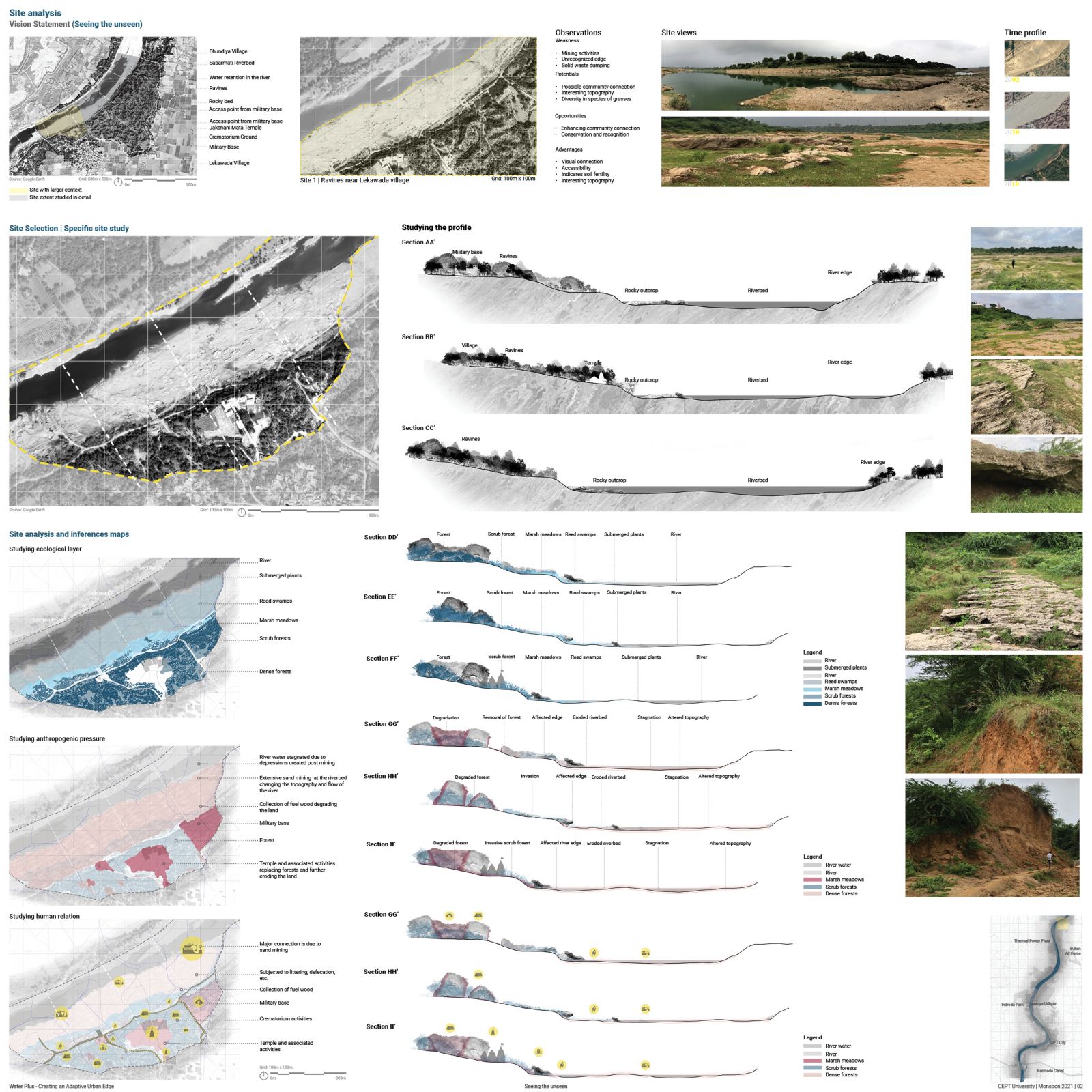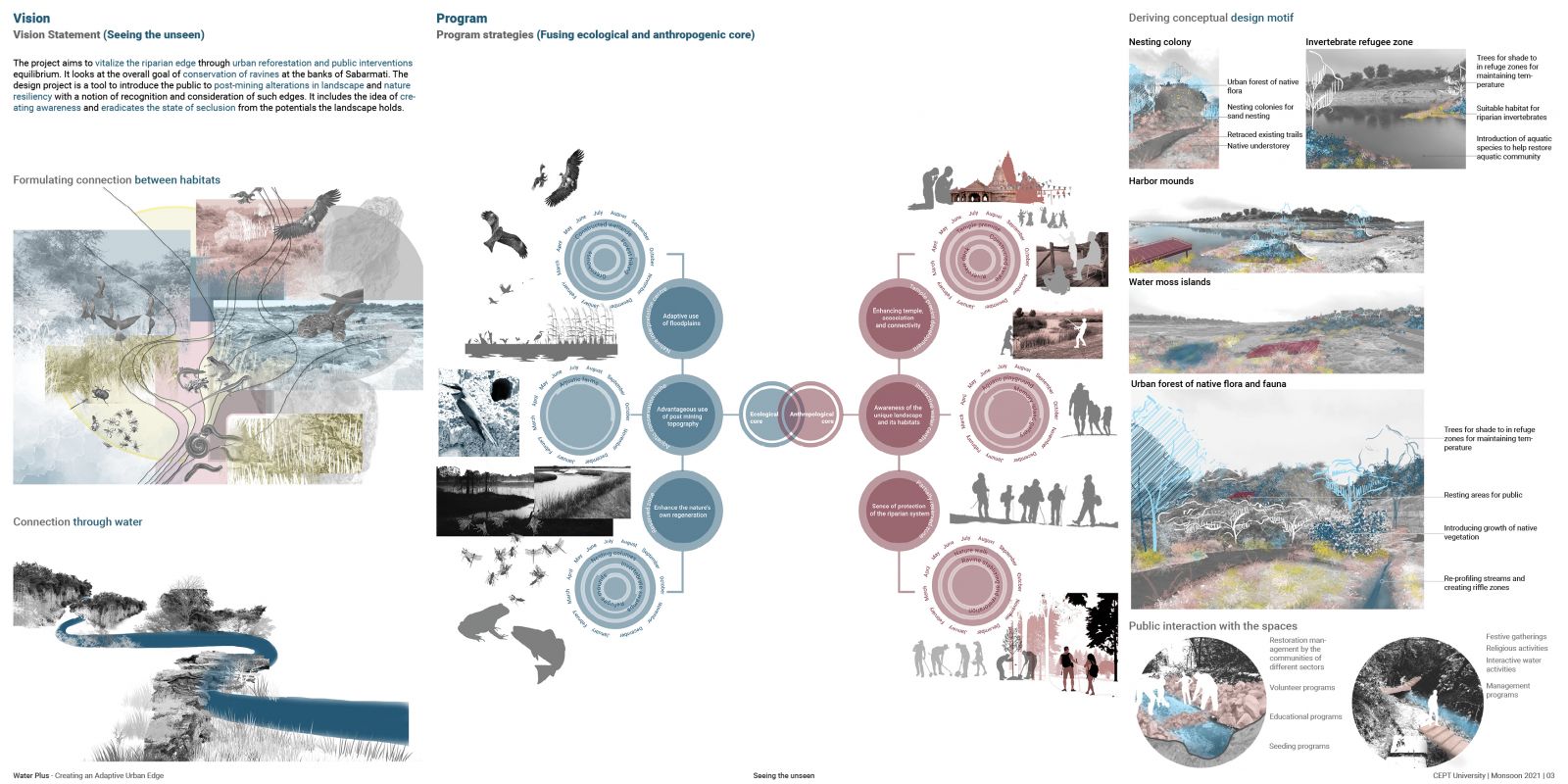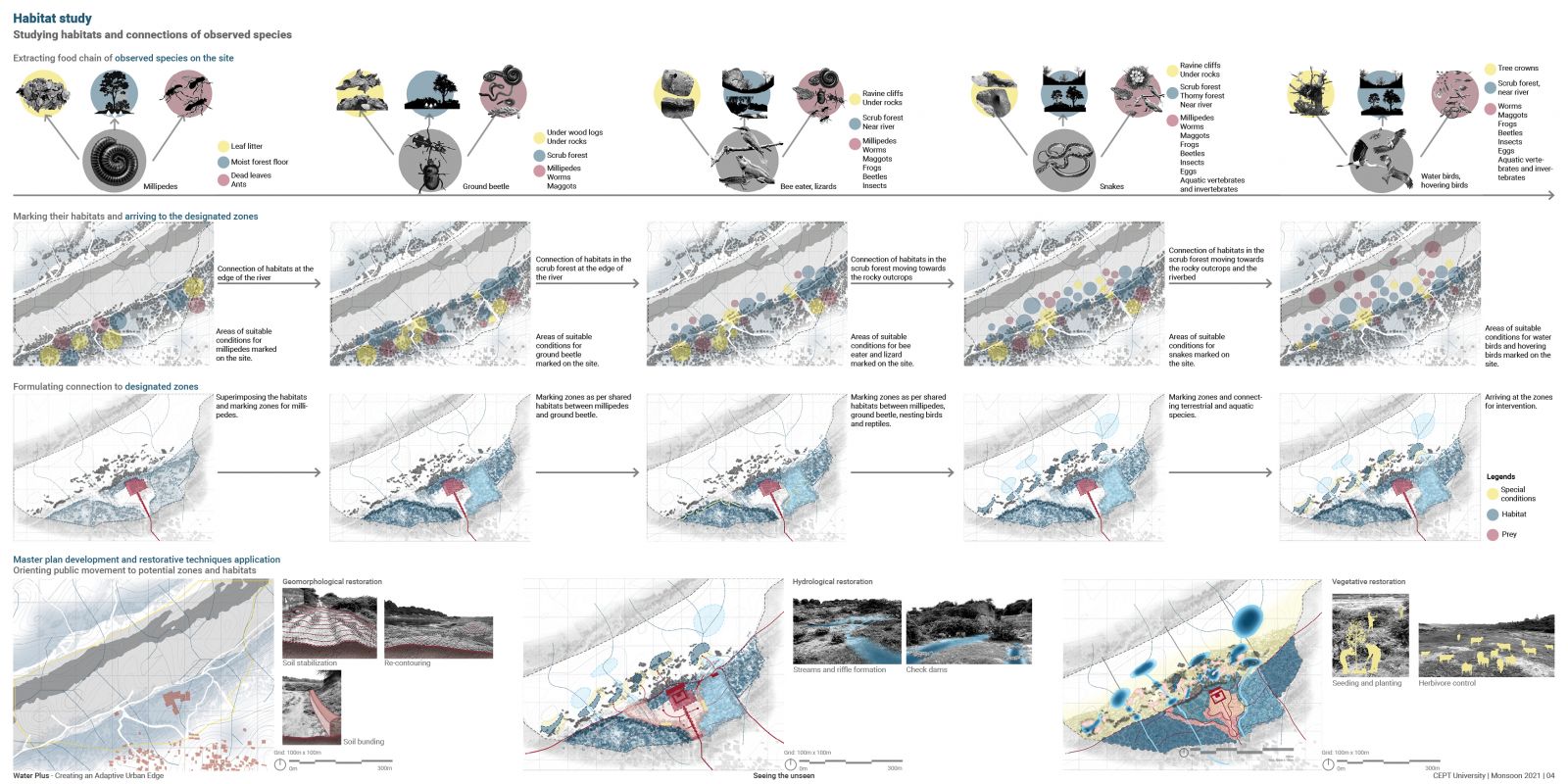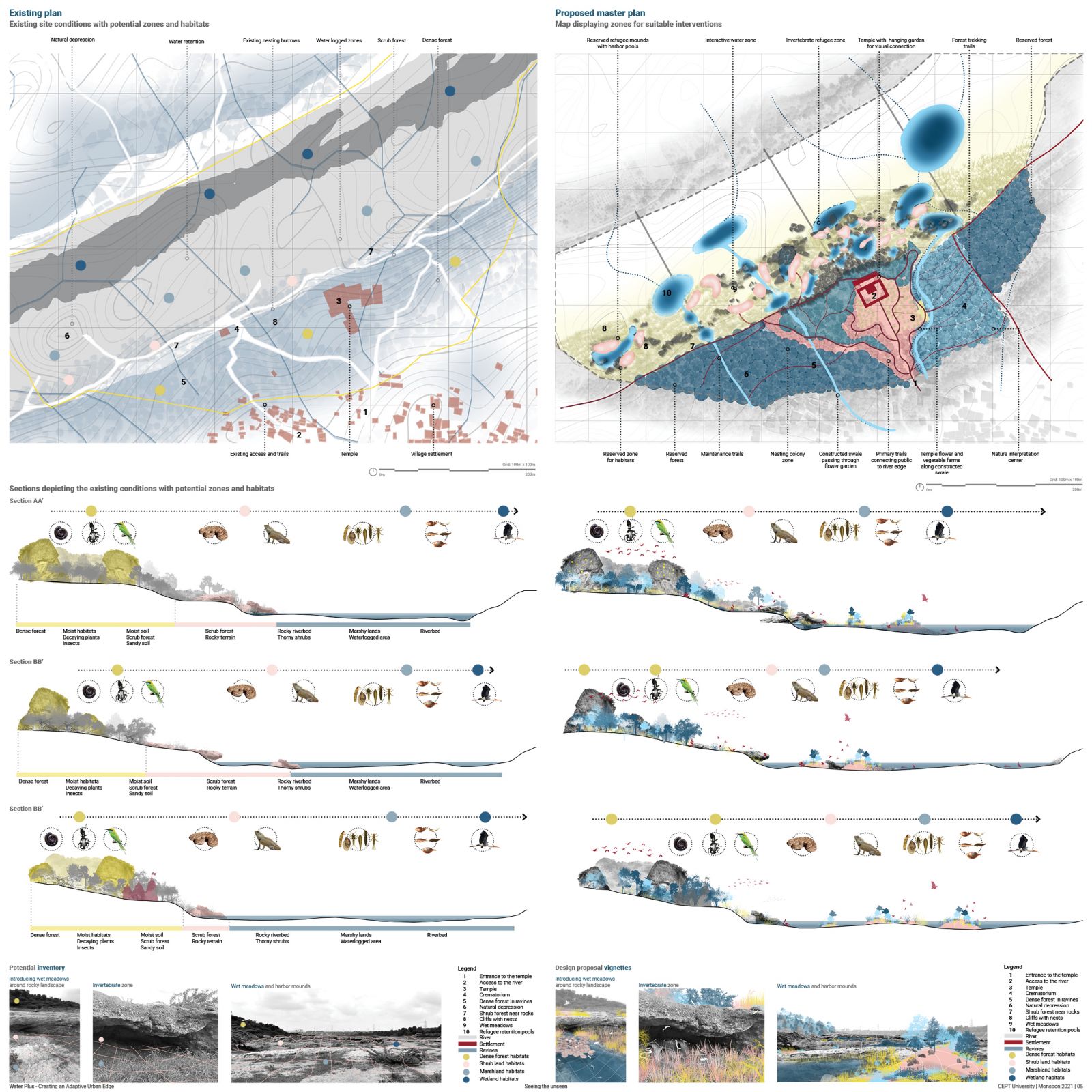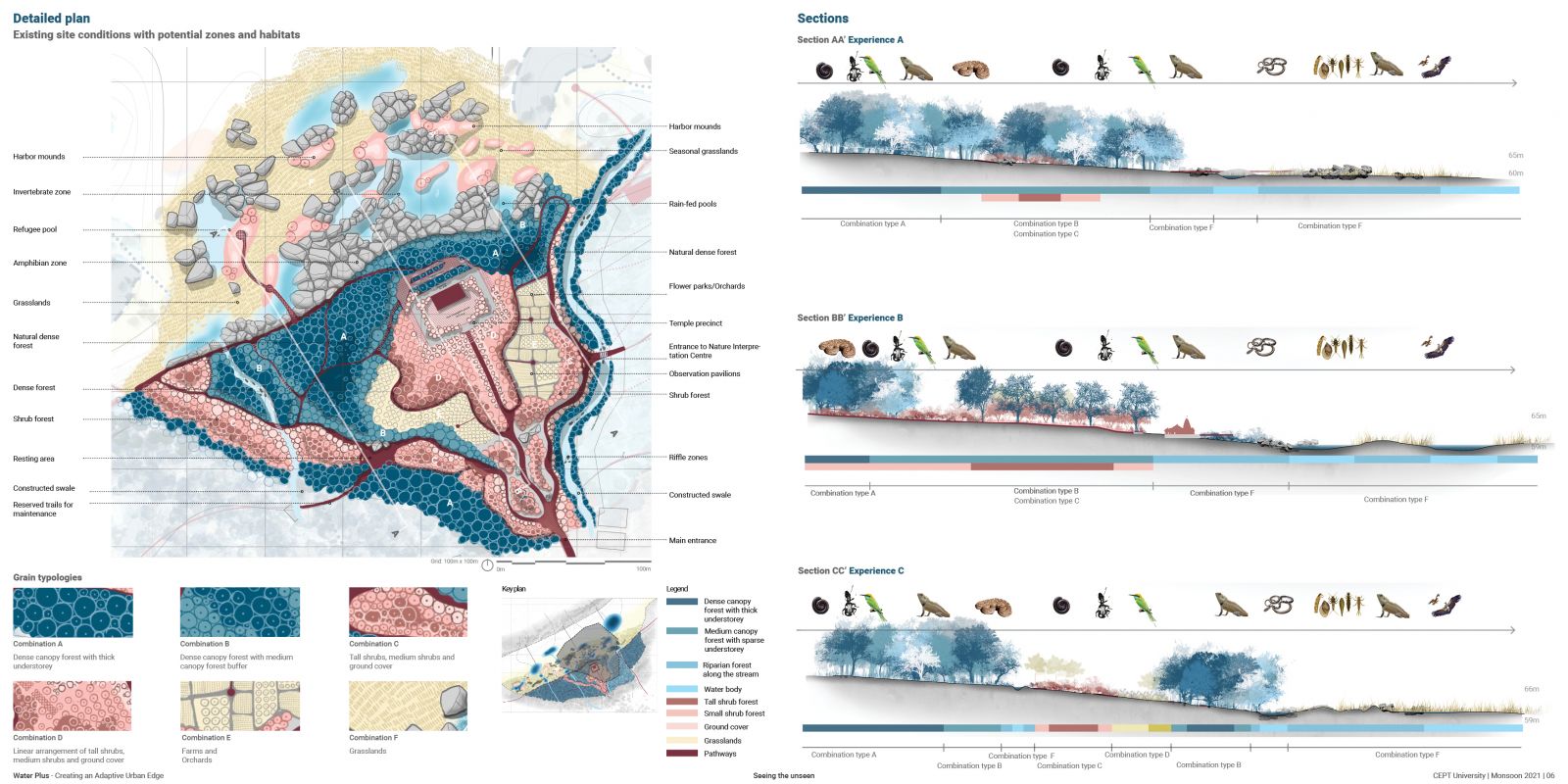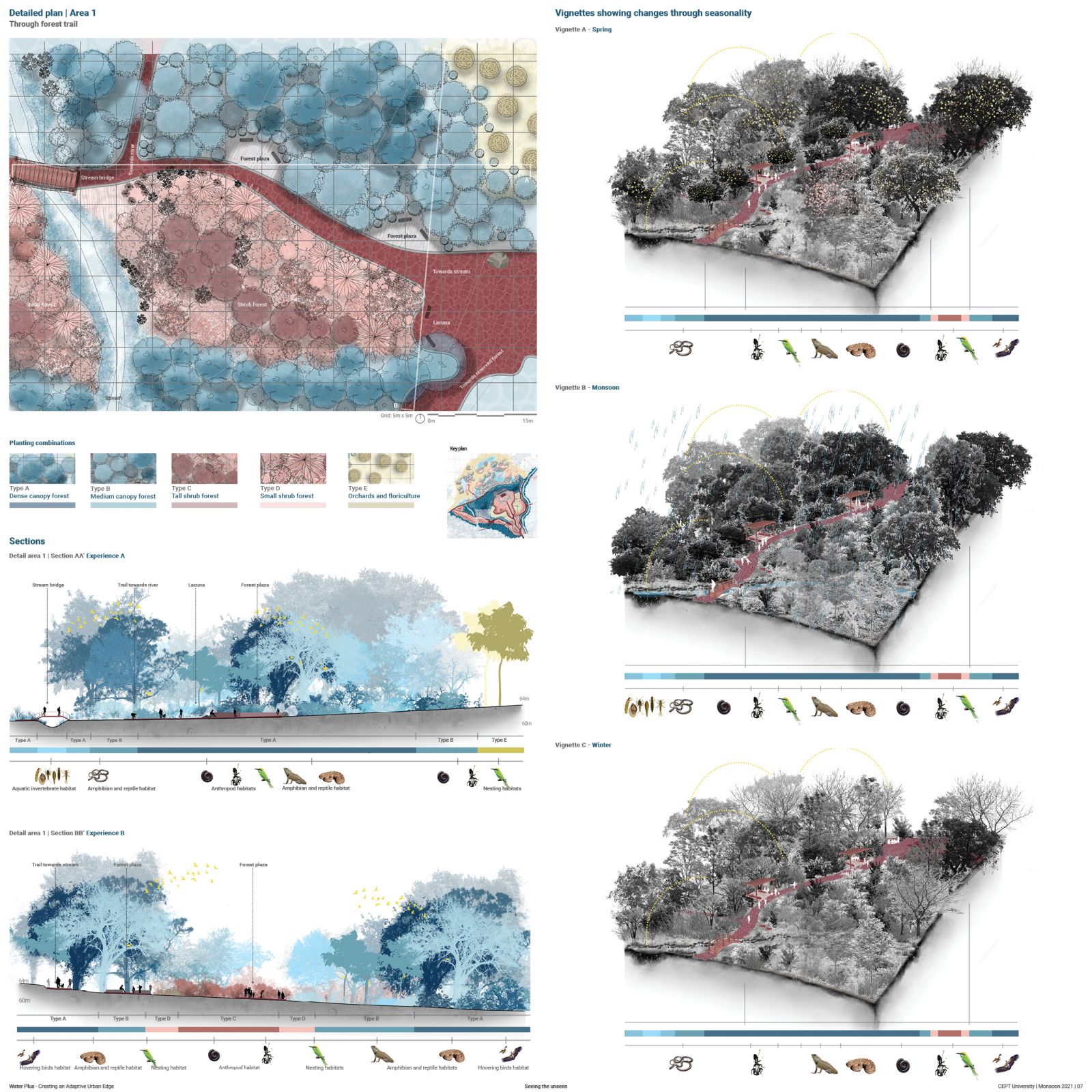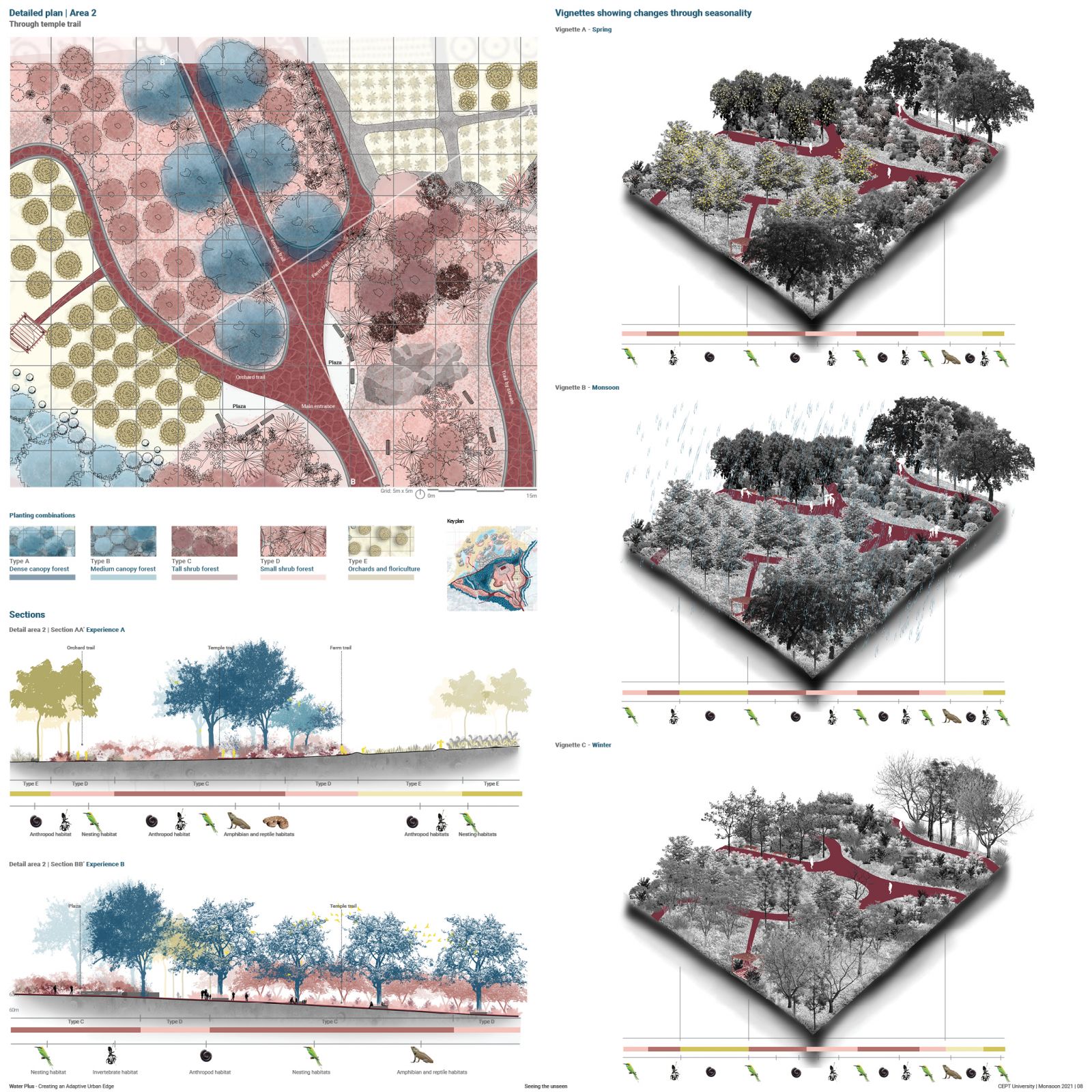Your browser is out-of-date!
For a richer surfing experience on our website, please update your browser. Update my browser now!
For a richer surfing experience on our website, please update your browser. Update my browser now!
Through encouraging adaptations of habitats in the post-mining landscape.
The ravines are the lungs of the river that sustain various life forms. The project begins by noticing millipedes in the context of Sabarmati, specifying the direction of the exploration under the understory. At first glance, one observes a sheet of Prosopis juliflora covering the edges. But millipedes helped to view the vegetation and topography from a different perspective.
Taking the presence of millipedes as clues and marking those observations along the river, the project establishes itself on the food chain of the millipedes and the study of the immediate organisms falling in it. And this involves the identification of habitats and interconnecting them as dots in the process.
The prime focus is on vitalizing the riparian edge near Lekawada village that involves native reforestation and intervention for people. That creates an equilibrium of habitats. The project goal is the conservative adaptation of ravines and awareness of utilizing a post-mining region. Further, the ideas condense into a project introducing a riparian park along the edge of Lekawada village, sustaining a fusion of the ecological and anthropological core.

